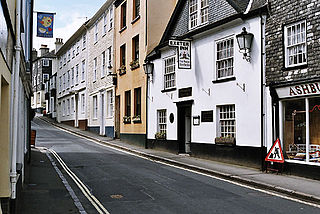
Ashburton is a town on the south-southeastern edge of Dartmoor in Devon, England, adjacent to the A38. The town is 20 miles (32 km) northeast of Plymouth and 17 miles (27 km) southwest of Exeter.
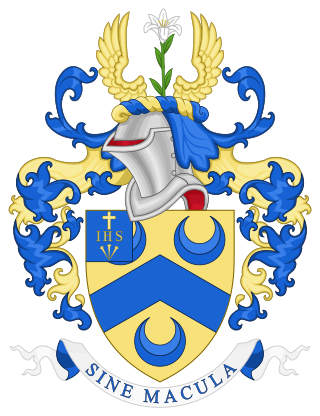
Mount St Mary's College is an independent, co-educational, day and boarding school situated at Spinkhill, Derbyshire, England. It was founded in 1842 by the Society of Jesus, and has buildings designed by notable architects such as Joseph Hansom, Henry Clutter and Adrian Gilbert Scott. The school is a member of the Headmasters' and Headmistresses' Conference and the Catholic Independent Schools Conference.

Sledmere is a village in the East Riding of Yorkshire, England, about 7 miles (11 km) north-west of Driffield on the B1253 road.

Barlborough Hall is a Grade I listed 16th-century country house in Barlborough, Chesterfield, Derbyshire. It was built in around 1583-84 for Sir Francis Rodes and is attributed to Robert Smythson.

Wookey is a village and civil parish 2 miles (3.2 km) west of Wells, on the River Axe in the Mendip district of Somerset, England. The parish includes the village of Henton and the nearby hamlets of Yarley and Bleadney where the River Axe travels the length of the village. There used to be a port at Bleadney on the river in the 8th century which allowed goods to be brought to within 3 miles (5 km) of Wells. Wookey is often confused with its sister village Wookey Hole, site of the Wookey Hole Caves.

Stalisfield is a village in the borough of Swale in Kent, England, located on a secondary road about 1½ miles (2.4 km) north of Charing and 5 miles south west of Faversham. The parish includes the hamlet of Stalisfield Green.
The Barran Baronetcy, of Chapel Allerton Hall in Chapel Allerton in the West Riding of the County of York and Queen's Gate, St Mary's Abbot, in Kensington in the County of London, is a title in the Baronetage of the United Kingdom. It was created on 11 February 1895 for the merchant and Liberal politician John Barran. He represented Leeds and Otley in the House of Commons. He was succeeded by his grandson, the second Baronet. He sat as Liberal Member of Parliament for Hawick and served as Parliamentary Private Secretary to Prime Minister H. H. Asquith.

Sir John Barran, 1st Baronet was a British clothing manufacturer and Liberal Party politician.

George Corson (1829–1910) was a Scottish architect active in Leeds, West Yorkshire, England.
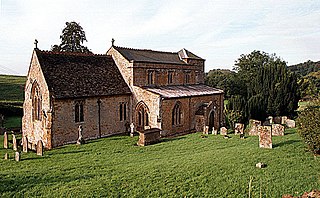
Drayton is a village and civil parish in the valley of the Sor Brook in Oxfordshire, about 2 miles (3 km) northwest of Banbury. The 2011 Census recorded the parish's population as 242.

Park Square is a Georgian public square in central Leeds, West Yorkshire. The square is grassed over and is a traditional Georgian park. The square is in Leeds' financial quarter and is surrounded by Georgian buildings, which are occupied as offices, many by barristers and solicitors.

Thomas Ambler was an English architect, living and working in Leeds, West Yorkshire, England.

St Andrew's Church is Church of England parish church in a central position in the village of Sonning, close to the River Thames, in the English county of Berkshire. It is notable for its fine array of church monuments and for being the successor of an Anglo-Saxon Cathedral.

Busbridge War Memorial is a First World War memorial in the churchyard of St John's Church in village of Busbridge in Surrey, south-eastern England. Designed by Sir Edwin Lutyens, it is Grade II* listed.
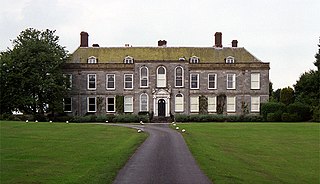
Aldenham Park, also known as Aldenham Hall, is a late 17th-century country house in Morville, near Bridgnorth, Shropshire, England which stands in 12 hectares of parkland. It is a Grade II* listed building.

Thomas Hellyer was an English architect of the mid-Victorian era. He was based on the Isle of Wight and was "the leading Island-based architect of the period", but his works can also be found on the mainland—principally in Hampshire—but also further afield. Described by Pevsner as a "very individualistic" and "remarkable" architect, his output included churches, houses, schools and hospitals across the island, during a period of rapid urban development. Many of his buildings have listed status and he "made important contributions to the appearance of the city" of Portsmouth through his extensive work in the area.
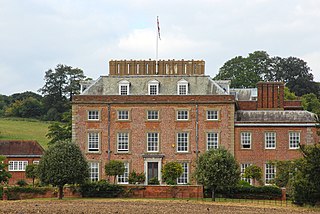
St Clere is a Grade I listed 17th-century country house in Kemsing, Kent, England.

John Wormald Appleyard was a British sculptor and monumental mason based in Leeds, West Yorkshire, England.

Kirkgate is a street in the city centre of Leeds, in England.

Beckett Street Cemetery is a closed cemetery in Burmantofts, Leeds, West Yorkshire, England. Founded in 1842, the site was officially opened in 1845 and is recognised as being one of England's first municipal burial sites. Although the cemetery was closed to interments in 2001, it remains open for visitors, and has two listed structures besides being a listed park itself.






















